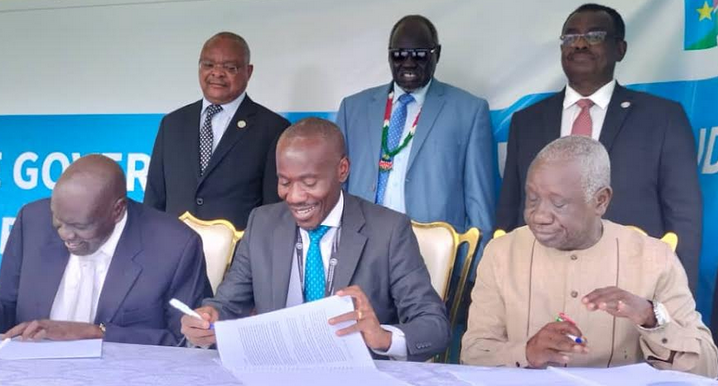The United Nations Food and Agriculture Organization (FAO) and several government ministries have signed a 270 million US dollar deal to implement a project on resilience and development.
The framework agreement was signed by the Ministry of Agriculture and Food Security, the Ministry of Livestock and Fisheries, the Ministry of Gender, the Ministry of Trade, and the Ministry of Environment and Forestry.
Speaking during the signing ceremony, Meshak Malo, the FAO country representative in South Sudan, said the three-year agreement will further cooperation between the FAO and South Sudan through the resilience project.
“We have just celebrated ten years of cooperation between the FAO and South Sudan and as we move forward, we are looking at the next three years and we have signed a cooperation agreement with the various ministries,” he said. “The difference between this framework and the old one is that this focuses a lot on resilience and development. FAO wishes to build on the peace that has existed in the country and that is why this has been marked by the opening of the new warehouse.”
Malo said they have constructed a warehouse as part of the project which will act as a storage facility for excess food and that it will encourage youth involvement in agribusiness.
“The warehouse is constructed in a dome shape with the hope that in the near future, it will be the food reserve to store the excess food for South Sudan,” Malo explained. “So, that marks the new framework which focuses a lot on agribusiness to make the youth engage in agriculture as a business, focus on some five major areas particularly honey, Shea butter, crops, fisheries, and livestock.”
He revealed that it is anticipated that the project will cost about 90 million US dollars per year and consist of some emergency activities that will continue but gradually Move more towards resilience and development projects.
For his part, the Minister of Livestock and Fisheries, Onyoti Adigo Nyikac, said South Sudan has huge agriculture resources which must be exploited and capitalized on, especially in the context of the livestock and fisheries sectors.
“There is an estimate of 36 million head of cattle, goats, sheep, and diverse genetic resources. We also have a substantial fisheries resource in the country. Currently, livestock contributes about 36 percent to agriculture GDP and provides a livelihood to about 80 percent of the country`s population” Adigo said. “The sector has considerable potential to address the challenges of nutrition and food insecurity, poverty, and unemployment that continue to have a negative impact on the country’s socio-economic situation.”




